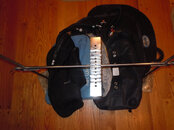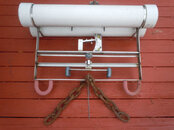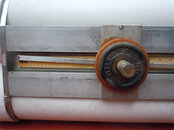More like total frustration.
Way back when I decided to shake off my NE wreck diving bad habits, I found trim in frog position to be near impossible. Got the same message from everyone, it is all due to your form. It wasn't. One of the secrets of DIR/GUE is to get to a stable rig and don't mess with it. Fine, but I don't dive like that. I love diving whatever I can get my hands on. It is fun to dive different gear. I just bought a sweet SP Classic jacket BC.

20 dives before you are truly tuned in?
Finding Proper Trim
Quoted from the above link:
"It often takes new divers about 20 dives or so to get comfortably weighted with the right amount of ballast, but because trim issues are less conspicuous, divers can go for years without realizing them." Yep.
Every time I make a big change, it takes 20 dives to dial it in?!! Roger that. A two hour drive for a max of three dives on a boat that costs almost $200US all told?
I have a decent metal shop and welding machine in the basement. I'll take any excuse to visit my local metal wholesaler.

Trim is not intuitive. A camera is mandatory. My trim is improving to where it is no longer the deal-breaker when I'm overtasked. That took a hell of a lot of work.
So it all comes down to physics, but you get a wonderful break. All buoyancy forces are vertical. Sink or float. Sum them and fix the error.
All rotational forces operate around your balance point. Force times distance. So yes, you can throw a rig together on paper, do the math, and hang there like one of the cave butterflies when you splash.
@stuartv we aren't that far from each other. I'll loan you the lot anytime you like...







